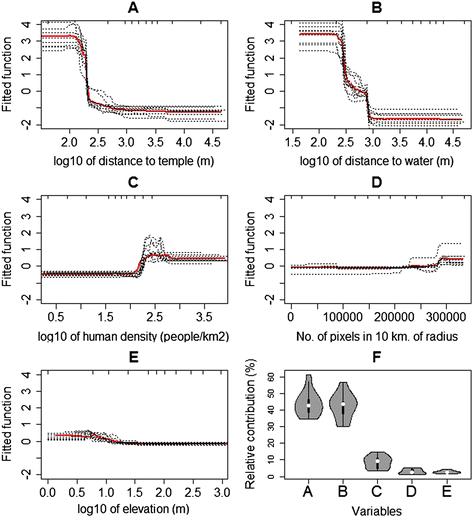Spatial characterization of colonies of the flying fox bat, a carrier of Nipah virus in Thailand
- PMID: 25880385
- PMCID: PMC4389713
- DOI: 10.1186/s12917-015-0390-0
Spatial characterization of colonies of the flying fox bat, a carrier of Nipah virus in Thailand
Abstract
Background: A major reservoir of Nipah virus is believed to be the flying fox genus Pteropus, a fruit bat distributed across many of the world's tropical and sub-tropical areas. The emergence of the virus and its zoonotic transmission to livestock and humans have been linked to losses in the bat's habitat. Nipah has been identified in a number of indigenous flying fox populations in Thailand. While no evidence of infection in domestic pigs or people has been found to date, pig farming is an active agricultural sector in Thailand and therefore could be a potential pathway for zoonotic disease transmission from the bat reservoirs. The disease, then, represents a potential zoonotic risk. To characterize the spatial habitat of flying fox populations along Thailand's Central Plain, and to map potential contact zones between flying fox habitats, pig farms and human settlements, we conducted field observation, remote sensing, and ecological niche modeling to characterize flying fox colonies and their ecological neighborhoods. A Potential Surface Analysis was applied to map contact zones among local epizootic actors.
Results: Flying fox colonies are found mainly on Thailand's Central Plain, particularly in locations surrounded by bodies of water, vegetation, and safe havens such as Buddhist temples. High-risk areas for Nipah zoonosis in pigs include the agricultural ring around the Bangkok metropolitan region where the density of pig farms is high.
Conclusions: Passive and active surveillance programs should be prioritized around Bangkok, particularly on farms with low biosecurity, close to water, and/or on which orchards are concomitantly grown. Integration of human and animal health surveillance should be pursued in these same areas. Such proactive planning would help conserve flying fox colonies and should help prevent zoonotic transmission of Nipah and other pathogens.
Figures







References
-
- Mohd Nor MN, Gan CH, Ong BL. Nipah virus infection of pigs in peninsular Malaysia. Rev Sci Tech Int Off Epizoot. 2000;19:160–5. - PubMed
-
- WHO | Nipah Virus (NiV) Infection [http://www.who.int/csr/disease/nipah/en/]
Publication types
MeSH terms
Grants and funding
LinkOut - more resources
Full Text Sources
Other Literature Sources

